Posted by Anita on 11.21.08 11:14 PM
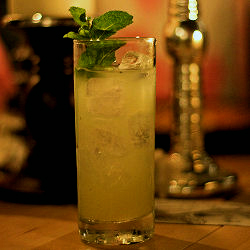 I feel downright terrible that it’s taken me this long to tell you about the fabulous time we had last month in Seattle at Le Mixeur, the exclusive soirée organized by the Munat Bros, Ted & Charles. But in my defense, it’s taken me this long to figure out how to explain it without sounding like I’m bragging. Because, dear reader, saying Le Mixeur is a cocktail party is like calling the Titanic a boat: Technically accurate, but completely missing the point both in scale and impact.
I feel downright terrible that it’s taken me this long to tell you about the fabulous time we had last month in Seattle at Le Mixeur, the exclusive soirée organized by the Munat Bros, Ted & Charles. But in my defense, it’s taken me this long to figure out how to explain it without sounding like I’m bragging. Because, dear reader, saying Le Mixeur is a cocktail party is like calling the Titanic a boat: Technically accurate, but completely missing the point both in scale and impact.
We’d read about these fabulous shindigs, jealously drooling over tales of drinks created by some of the West Coast’s finest mixological masterminds. But somehow — despite having ingratiated ourselves to the Munats both at the Zig-Zag and at Tales of the Cocktail — we’d never managed to sync our travel plans to their social calendar. Eventually, we hit the jackpot, scoring an invite to Le Mixeur Cinq on a weekend when we had no other obligations; away we flew.
On our first night in Seattle, we dropped in on Keith Waldbauer skulking in his lair at Union, one of our all-time favorite Seattle dining spots. We’d read that Keith had contributed a recipe to the Mixeur menu, and we asked him to tell us about his inspiration for the drink that would be served to dozens — if not hundreds — of serious cocktailians the following night.
“Oh… you’re going to Le Mixeur?” he asked with a gleam in his eye. “You’ll have to tell me how my drink tastes. I just sent them a recipe and didn’t even try it.”
Was he pulling our leg? You never know with Waldbauer. No sir, you never know with a man like that.
The next night, we made our way to a warehouse loft in SoDo, in the ominously empty streets bathed in the blue glow of Qwest Field. After climbing flight after flight of stairs, our efforts were rewarded. The white-walled loft opened out and up and away, revealing a happy hubbub. Our eyes darted from walls hung with eclectic art to the oh-my-god-impressive bar in the corner, where professional mixologists and a few determined amateurs shook and poured for the flowing crowd. In an open mezzanine above, the DJ nodded and smiled as the beat kicked in; a belly dancer took the floor, gyrating for the loudly appreciative audience.
The bar was stacked deep and thick as folks studied the night’s menu and waited patiently. We quickly found Charles Munat, and weasled our way into a couple of drinks after what we later realized was a uniquely short interval. Happily, the crowd was full of plenty of friends, as well as many familiar faces from bars both near and far. And the gods of mixology obviously watch over fools and drunks, because Keith’s drink — a minty, gin-based, tall sour with a Chartreuse float, which he’d dubbed the Aristocrat Swizzle — was every bit as perfect as the setting.
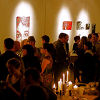
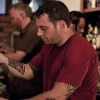
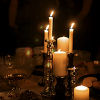
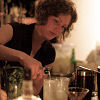
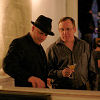
Aristocrat Swizzle
– Keith Waldbauer
1-3/4 oz gin
3/4 oz lime juice
10 mint leaves
dash simple syrup
1 barspoon green Chartreuse
Muddle mint and syrup in a mixing glass. Add gin and lime juice, and shake with ice. Strain into an empty Collins glass, fill with crushed ice, and top with a Chartreuse float. Garnish with a sprig of mint.
bar culture, Drink of the Week, drinks, Seattle
2 Comments »




Posted by Anita on 11.14.08 1:15 PM
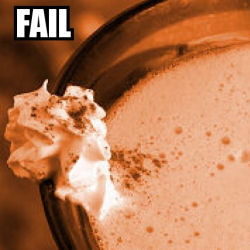
I’m having a turkey day get-together and wanted an appropriate drink. I’d like something I can serve in a martini glass, fancy shmancy cocktail thing. A guest suggested, um, I can barely type this — pumpkin pie martini — and I immediately had to shoot that down.
Help!
– Pumpkin-Averse Party Instigator
Dear PAPI:
What is it with the onslaught of pumpkin drinks this year? I mean, I love me some pumpkin pie, but …gah! Leave the whipped-cream garnish for the dessert table, please.
Thankfully, there are plenty of festive drinks that fit the bill for Thanksgiving that do not involve canned squash. Two of our favorite options from the Drink of the Week archives would be perfect for your holiday bash. They’re both certified crowd-pleasers, full of holiday flavors, and relatively low on the booze — a good idea at parties so casual drinkers don’t end up face down in the cranberry sauce. Best of all, you should be able to find all of the ingredients at your local Beverages & More, or any other well-stocked liquor store.
Have a happy Thanksgiving, and do let us know how it goes!
– Anita & Cameron
—-
Oh, Henry!
– Originally blogged 11/23/07 — click for photos and details
1-1/2 oz bourbon
1-1/2 oz spicy ginger ale (we like Blenheim)
3/4 oz Benedictine
Stir all ingredients in an ice-filled mixing glass, and strain into a cocktail glass. Garnish with a piece of star anise or an orange twist.
Now, I know a lot of casual drinkers might be wary of the bourbon. But be strong: A cocktail is like a dog — you can show no fear! I had three bourbon-haters begging me for the recipe at the last party we served these at. But do try to find Blenheim or another spicy ginger ale; Canada Dry and its ilk is too chemical-y and even the lovely Fever-Tree is too tame.
Make sure you grab Benedictine and not B&B (which is pre-mixed benedictine & brandy). The bottles look nearly identical and they’re often shelved together.
—
Falling Leaves
– Originally blogged 10/6/06 — click for photo and details
1 oz Clear Creek pear eau de vie
– or substitute pear vodka; Clear Creek is tricky to find outside of the West Coast
2 oz Trimbach Riesling wine
1/4 oz honey syrup
– equal parts of honey and water, heated together and then cooled
1/2 oz Orange curacao (such as Cointreau)
a dash of bitters, preferrably Peychaud for the rusty color and spice
Measure all ingredients into cocktail shaker, add ice, and shake well. Strain into a cocktail glass, and garnish with a whole piece of star anise or a sage leaf.
Drink of the Week, drinks, holidays & occasions, recipes
9 Comments »




Posted by Anita on 11.07.08 7:48 PM
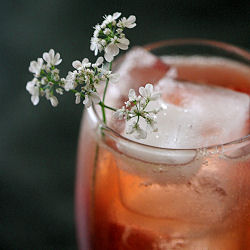 In case you’ve wondered why I’m blogging my heart out — especially after such a prolonged drought — I’m semi-covertly participating in National Blog Posting Month (better known as NaBloPoMo), a writing exercise that spun off from National Novel Writing Month.
In case you’ve wondered why I’m blogging my heart out — especially after such a prolonged drought — I’m semi-covertly participating in National Blog Posting Month (better known as NaBloPoMo), a writing exercise that spun off from National Novel Writing Month.
I haven’t officially signed up, but I’ve challenged myself to post every day this month, both to clear out the backlog of posts and photos lingering in the drafts folder, and to practice a little self-discipline. I figure if I can post seven days a week for 30 days, then the old three-times-a-week schedule will seem like a walk in the park.
—-
Way the heck back in August, I accepted a very interesting, but very unorthodox freelance assignment. Jean Aw — the brains behind NOTCOT and Liqurious — hired me for a combination recipe development / cocktail photography gig. That alone is pretty out there; most jobs are one or the other. But the angle of the job made it even more bizarre: On a dare, we agreed to come up with three cocktails based on yogurt flavors… although mercifully not containing any actual yogurt. (You can read the incredibly funny story behind it in Jean’s own words.)
The cocktails finally made their debut on NOTCOT last week. Alas, it’s too late in the year to try out my favorite of the three: the Sweet Summer Revival (fresh peach, green-tea-infused vodka, and Grand Marnier), but we’ll bring it back around for a sample in 2009. And already the weather seems a little too dreary for the citrusy Bee Cool (honey, lemon, plum brandy, creme de violette, and lavender soda).
But the third drink in the set seems more seasonally appropriate. The White Flower Bramble takes its inspiration from Rachel’s berry-jasmine flavor called “Glow”. It’s based on a popular English drink that marries blackberry liqueur and gin, but replaces the usual simple syrup with St-Germain liqueur for a floral touch. We’ve still got raspberries at our farmers market, but if they’re gone where you are, fresh cranberries could easily take their place.
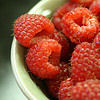
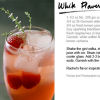
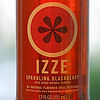

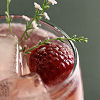
White Flower Bramble
1-1/2 oz No. 209 gin
3/4 oz St-Germain elderflower liqueur
3/4 oz fresh lemon juice
berry soda (such as Izze blackberry or Fizzy Lizzy cranberry)
fresh raspberries or cranberries
Shake the gin/vodka, elderflower liqueur, and lemon juice with ice. Strain into an ice-filled highball or cooler glass. Add 2-3 berries, and top with blackberry soda. Garnish with an edible white flower, such as chamomile or lemon verbena.
Drink of the Week, drinks, other blogs
1 Comment »




Posted by Anita on 10.31.08 7:07 AM
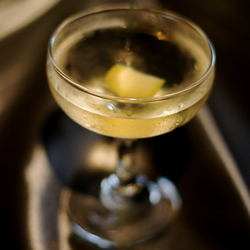 It’s been a good year or two for vintage cocktail buffs. After wandering in the metaphorical desert for so long in search of lost ingredients, our oddball desires have finally been vindicated. Every few months, a flurry of spirits are resurrected from the dustbins, opening up another chapter of classic recipes for experimentation.
It’s been a good year or two for vintage cocktail buffs. After wandering in the metaphorical desert for so long in search of lost ingredients, our oddball desires have finally been vindicated. Every few months, a flurry of spirits are resurrected from the dustbins, opening up another chapter of classic recipes for experimentation.
The latest no-longer-missing link is genever, also known in the old cocktail manuals as Holland gin. Of course, genever’s never really gone away. Industrious cocktail hounds have traveled to the Netherlands and brought back suitcases full of the juniper-laced spirit, or scoured the dusty shelves of liquor stores in search of the odd bottle or two. And the drink-nerdy among us will vouch that San Francisco’s very own Anchor Distilling — of Junipero gin and Old Potrero whiskey fame — produces their own genever-ish expression known as Genevieve.
But true Dutch-style genever has been rather thin on the ground in the States, at least until this fall. At the West Coast reintroduction of Bols Genever, I had a chance to chat with cocktail historian David Wondrich, most recently known as the author of the top-notch Jerry Thomas biography, Imbibe!.
Accustomed to a fair bit of cynicism in the professional cocktail world, I was struck by how genuinely excited Wondrich seems about this re-release.
“When you make some of the old [Thomas] drinks with London dry gin,” says Wondrich, “You take a sip and think ‘Hmm, tastes must have changed in the last 100 years’ and dump it out. But when you mix them with genever — which was the gin the bartenders were using in those days — the flavors suddenly click.” Running down the Thomas drinks roster with Wondrich, you get a sense of how a steady supply of good genever could change things dramatically for vintage cocktail aficionados; perhaps 19th-century cocktails will be the next big thing after all.
If you’re expecting genever to taste like a typical English gin, you’ll be taken aback; its flavor is closer to a young whiskey minus any of the woody notes, or perhaps a silver tequila without agave’s horse-blanket overtones. Though genever is commonly regarded as the forerunner of gin, most gin is little more than herb-infused vodka, redistilled to remove harsh flavors and cloudiness. Traditional genever starts out as maltwine, which in turn begins as a beer-like mash. Bearing all this in mind, Bols has taken pains to ensure that their genever is not labeled or marketed as a gin, instead pushing the government to recognize it as a distinct spirits class. On the other side of the Atlantic, genever benefits from a new European Union location-protected appellation — analgous to Champagne or Cognac or Roquefort — mandating production within the Netherlands and adjoining low-countries regions in order to bear the name.
(Oh, and about that name? It’s pronounced gen-EE-vrr, as opposed to JEN-eh-ver. Yes, I’ve been saying it wrong all these years, too, so don’t feel too bad.)
And oh my, what a gorgeous bottle. Bols tells us it’s the first use of smoked glass in a spirits bottle, manufactured using a technique that was not as easy to borrow from the perfume world as they had hoped. The logotype evokes the beautiful calligraphy found on the dark windows of old Dutch cafes.
Bols plied us with a parade of cocktails that afternoon, but my favorite — a preference shared by many of the folks I chatted with — was the Holland Gin Cocktail. Actually, Bols styles it the Improved Holland Gin Cock-Tail on their site, but since their recipe lacks any maraschino, I don’t think that’s actually the correct nomenclature. (I won’t bore you with the details here, but if you’re curious, I blathered about it elsewhere.) However you call it, this simply elegant combination showcases genever’s taste to a T, highlighting just how much you’re missing if you make many of the old drinks with plain-old gin.

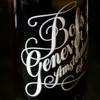

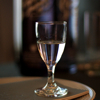

Holland Gin Cocktail
– Jerry Thomas, by way of David Wondrich
2-3 oz Bols Genever
2-3 dashes rich (2:1) simple syrup
2 dashes orange bitters
1 dash dry orange curaçao
Prepare a chilled coupe or cocktail glass by wetting the rim with a lemon slice. Stir the drink ingredients with large ice cubes and strain into the prepared glass. Cut a large coin-sized zest of lemon directly over the cocktail, spraying the oils over the drink and running the zest around the rim before dropping it in the drink.
Drink of the Week, drinks, recipes
5 Comments »




Posted by Cameron on 10.13.08 10:46 PM
 If there is a drink out there with fewer redeeming qualities than the Jäger Bomb, I can’t imagine what it is. Seriously folks, this drink is a bad idea. It tastes like cough syrup, it’s loaded with sugar, it packs enough caffeine to instantly add fifty points to your heart rate, and one of the main ingredients is made entirely of industrial chemicals.
If there is a drink out there with fewer redeeming qualities than the Jäger Bomb, I can’t imagine what it is. Seriously folks, this drink is a bad idea. It tastes like cough syrup, it’s loaded with sugar, it packs enough caffeine to instantly add fifty points to your heart rate, and one of the main ingredients is made entirely of industrial chemicals.
And so, in honor of Stevi’s Mixology Monday topic, Guilty Pleasures, I’m horrified to share with you that I’m completely, utterly addicted to the Trailer Trash Speedball, the Turbojäger, the Flying Hirsch, La Perla Negra: The Jäger Bomb.
I picked up this dirty little habit during my tour of duty as a guitar player for Seattle-area cover band Bad Alibi. For the first three months, I was fastidious about not drinking during performances. To tell the truth, for the first month, I was too panicked to even think about trying to play with a buzz on, which amused my band mates tremendously. They rarely got out of control, but every set was accompanied by beer and, to tell the truth, if our drummer wasn’t stoned, he couldn’t keep time at all.
Before the third and final set of the evening, one of the Alibi Boys would usually buy a round of Jäger Bombs. At first I declined to take part in the toxic trainwreck, but eventually I thought, “Don’t knock it if you haven’t tried it.”
Like any destructive obsession, ritual is an important part of the Jäger Bomb. A shot of Jägermeister, an herbal liqueur, is served next to a pint glass containing half a can of Red Bull energy drink. You drop the shot glass into the pint glass and chug the mixture. Think of it as a millennial boilermaker.
As I climbed back on stage after my first ever Jäger Bomb, I immediately understood the appeal. Our third sets usually ran from midnight to 1:45am. Fridays weren’t too bad, but we always played two nights in a row and the third set on Saturday could be tough. No matter how big the crowd was, by 12:30, the entire room was completely blasted. By 1am, the energy would start to fall off, and by 1:30, the only people upright were usually us and the bar staff.
 This is all by way of saying that if you run around playing high voltage rock and roll late at night, the Jäger Bomb starts to make a lot of sense. One produces a high, fine, jittery feeling, and two will definitely get your motor running. Drink three in quick succession and you might as well hand the bartender your credit card and have them call the cops now, just to save time.
This is all by way of saying that if you run around playing high voltage rock and roll late at night, the Jäger Bomb starts to make a lot of sense. One produces a high, fine, jittery feeling, and two will definitely get your motor running. Drink three in quick succession and you might as well hand the bartender your credit card and have them call the cops now, just to save time.
After about a year and a half of playing 5 hours a night, 2 nights a week, 3 weekends a month in roadhouses anywhere from 45 minutes to 2 hours outside the city, all while holding down a full time corporate day job, my attitude towards rock godhead changed. The crowds were getting smaller, the drives were getting longer, and there is absolutely nothing fun about breaking down the stage at 2am. When I left the band, I mostly stopped drinking Jäger Bombs, as it’s not the sort of thing that you order in polite company.
But every now and then I let the inner Neanderthal come out to play. I drop the shot into the glass, and fire back the mixture. As the tight rush crawls up my spine, I close my eyes and remember when the lights flashed, the fog billowed, and—with one foot on the monitor and a snarl on my lips—I delivered the mighty rock thunder to a sea of dancing hooligans.

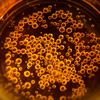
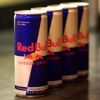
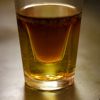

Jäger Bomb
4oz of energy drink (roughly 1/2 can of Red Bull)
1 shot Jägermeister
Pour the energy drink in a pint glass. Drop the shot in the pint glass and drink the whole mess down. Rock on.
bar culture, Drink of the Week, drinks, Mixology Monday, recipes, Seattle
13 Comments »




Posted by Anita on 09.15.08 3:41 PM
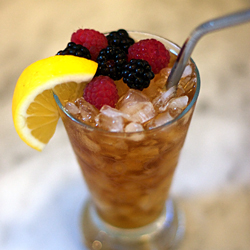 This month’s edition of Mixology Monday, hosted by Dinah and Joe at Bibulo.us, focuses on 19th century libations.
This month’s edition of Mixology Monday, hosted by Dinah and Joe at Bibulo.us, focuses on 19th century libations.
We’re no strangers to this era: Previous editions of Drink of the Week have covered the venerable Mint Julep (1824), Sazerac (1859), Martinez (1862), Manhattan (1870), Ramos Gin Fizz (1880s), Whiskey Sour (pre-1888), Widow’s Kiss (1895), and Horse’s Neck (1897). But, to a greater or lesser degree, all of these drinks have remained well-loved throughout the years.
But what of the Sherry Cobbler, the late 19th century’s most popular drink? What became of the darling that inspired such adulation?
Gin-sling, cock-tail, mint-julep, are about as vulgar as blue ruin and old tom at home; but sherry cobbler is an affair of consideration.
— “Canada and the Canadians“, Richard Henry Bonnycastle (1848)
Most sources date the origins of the Sherry Cobbler to the 1840s — the height of its popularity, to be sure. Digging through web references, I found a mention of it in Washington Irving’s Knickerbocker’s History of New York, Complete, a satirical record of early New York City, first published in 1809:
[Residents of Maryland] lay claim to be the first inventors of those recondite beverages, cock-tail, stone-fence, and sherry-cobbler, and to have discovered the gastronomical merits of terrapins, soft crabs, and canvas-back ducks.
It’s surely a tongue-in-cheek admonition, as the word “cocktail” wouldn’t have been known in the colonial era that our fictional historian details. But despite his tomfoolery, Irving thought that cobblers were sufficiently well-known in 1809 that he could reference it without description — a full 30 years before cobbler-mania’s peak.
There’s hardly a peep about cobblers until the late 1830s, but mid-century publications are chock full of evidence that Sherry Cobbler took England by storm soon thereafter. By 1844, no less a light than Charles Dickens name-checks the drink in his serial novel Martin Chuzzlewit, an otherwise scathing indictment of all things American. In one chapter, the title character’s traveling companion Mark Tapley supplies him with a restorative tipple:
He produced a very large tumbler, piled up to the brim with little blocks of clear transparent ice, through which one or two thin slices of lemon, and a golden liquid of delicious appearance, appealed from the still depths below, to the loving eye of the spectator.
 ‘What do you call this?’ said Martin.
‘What do you call this?’ said Martin.
But Mr. Tapley made no answer; merely plunging a reed into the mixture — which caused a pleasant commotion among the pieces of ice — and signifying by an expressive gesture that it was to be pumped up through that agency by the enraptured drinker.
Martin took the glass with an astonished look; applied his lips to the reed; and cast up his eyes once in ecstasy. He paused no more until the goblet was drained to the last drop.
‘This wonderful invention, sir,’ said Mark, tenderly patting the empty glass, ‘is called a cobbler. Sherry cobbler when you name it long; cobbler, when you name it short.
Presumably upon reading Dickens’s account of ecstasy on ice, British university students were swept up in a cobbler craze. Despite initial problems with substandard ice sourced from fishmongers, the drink’s popularity soared, finding its way into genteel parlors and private gentlemen’s clubs. By 1862, so firmly was the cobbler established that Jerry Thomas devoted an entire section of his Bartender’s Guide to different recipes for cobblers made with sherry, claret, Champagne, whiskey, and sweet wines: hock, catawba, and Sauternes. Thomas tailors ingredients to the base spirit: Often there are oranges (peel or pieces), other times pineapple; an occasional sweet liqueur joins dissolved sugar for added sweetness.
A drink that could be enjoyed by gentlefolk without incurring scorn, it’s only fitting that the cobbler would have its own trinkets. The cobbler popularized the drinking straw; before the 1888 invention of the wound-paper model, hollow reeds or even macaroni strands were used! Cobblers were also, according to some highly reputable sources, the first drinks where ingredients were shaken with ice. I haven’t been able to find primary sources to support that observation, but it’s clear that the Sherry Cobbler craze of the mid-1800s was indeed the force that propelled cocktail shakers into every bar of any size. To this day, a three-piece cocktail mixer with a built-in strainer is known as a cobbler shaker.
Unlike many antique cocktails, this one’s still quite delectable to modern palates; the fresh-fruit garnish and wine base seem downright contemporary. Rescuing this drink from near-obscurity, a new breed of bartenders are cranking up variations coast to coast.
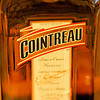
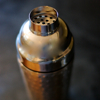
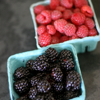
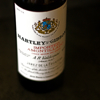
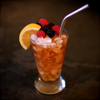
Sherry Cobbler
3 oz medium-dry sherry (such as Oloroso or Amontillado)
1/2 oz Cointreau
1/2 oz simple syrup (or to taste)
2 lemon or orange wedges
berries or other seasonal fruit, for garnish
Squeeze one citrus wedge into an ice-filled cocktail shaker. Add the spent citrus wedge, sherry, Cointreau, and simple syrup, and shake until very cold. Strain into a cobbler glass filled with crushed ice; garnish with the remaining citrus wedge and a riot of fruit, and serve with a straw.
Drink of the Week, drinks, Mixology Monday, recipes
11 Comments »




Posted by Anita on 08.20.08 5:35 PM
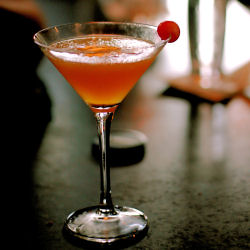 As our book club sips its merry way around the City, we’re discovering quite a few cocktails that we really like. Try as we might to work up enthusiasm for the drinks we’ve intended to sample, more often than not we actually become quite captivated by another option on the menu.
As our book club sips its merry way around the City, we’re discovering quite a few cocktails that we really like. Try as we might to work up enthusiasm for the drinks we’ve intended to sample, more often than not we actually become quite captivated by another option on the menu.
Such was life the other night at the bar at Range, where we’d gone to sample the Green Lantern, their contribution to Food & Wine Cocktails 2008. It’s an interesting enough drink, and if you hadn’t told me the lurid green came from muddled kiwifruit, I probably would have been stumped.
But the highlight of the evening was two pleasant surprises behind the bar: A newly-shorn Carlos Yturria — who, much to everyone’s pleasure has taken the Wednesday shift alongside the ever-fabulous Brooke — and the reappearance of a summertime favorite on the drinks list. The stalwart known as the Sungold Zinger has graced Range’s warm-weather cocktail menu since the restaurant’s earliest days, and its fan club is legion.
Jen ordered one, served by the man who invented it. Then Fatemeh followed, and then me, and then Cameron, and pretty soon there was a line down the bar of these sharp-looking, vibrant-orange cocktails. Well-balanced, tangy but not too tart, it’s a simple but beguiling combination… the kind of drink you wonder why nobody invented before. Everyone who tasted it had to have one of their own; we were totally smitten. And, apparently, we’re not alone: the Sungold Zinger was chosen one of the 20 best cocktails in America by GQ magazine.
It’s a simple enough recipe to make at home, especially when Sungold tomatoes are at their peak, as they are right now. But if you’re anywhere near Range — especially on a Wednesday night when Carlos is around — drop in for a little sip of summer sunshine.
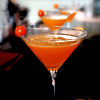

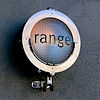
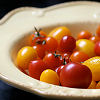
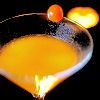
Sungold Zinger
3-4 Sungold tomatoes
Pinch of sea salt
1/2 oz agave syrup
1/2 oz lemon juice
1-1/2 oz 209 gin
Muddle the tomatoes, salt, and syrup together in a mixing glass. Add lemon juice and gin, and shake well with ice. Strain into a chilled cocktail glass, and garnish with another tomato on the rim.
Variation: Replace the agave syrup with an equal amount of St-Germain elderflower liqueur, a nice alternative if you want a little floral hit.
(leftmost filmstrip photo courtesy of book-club member *fatemeh* via CreativeCommons)
bar culture, Drink of the Week, drinks, recipes, restaurants, The Mission
14 Comments »




Posted by Anita on 08.11.08 12:07 PM
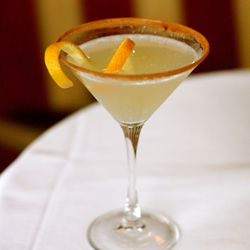 The Bay Area is home to so many fabulous local spirits that it seems almost impossible to single any of them out for special attention. For gin alone, we’ve got 209 and Junipero right here in the City, and Sarticious over the hill in Santa Cruz. We’re close to two top-tier artisan vodka companies — Charbay in Napa and Hangar One on Alameda — both of which also make a variety of other liquors and liqueurs, including St. George Absinthe and Single-Malt Whiskey, and Charbay Rum and Pastis. We’ve got a local brandy-maker, an old-school whiskey distiller, and even a bierschnapps haus.
The Bay Area is home to so many fabulous local spirits that it seems almost impossible to single any of them out for special attention. For gin alone, we’ve got 209 and Junipero right here in the City, and Sarticious over the hill in Santa Cruz. We’re close to two top-tier artisan vodka companies — Charbay in Napa and Hangar One on Alameda — both of which also make a variety of other liquors and liqueurs, including St. George Absinthe and Single-Malt Whiskey, and Charbay Rum and Pastis. We’ve got a local brandy-maker, an old-school whiskey distiller, and even a bierschnapps haus.
But honestly, San Francisco’s best local drinking resource may be its bumper crop of creative mixologists. As Camper pointed out (and I keep harping on at every chance I get), Food & Wine Cocktails 2008 includes an unmatched 17 recipes from SF’s watering holes. The bartenders in our City aren’t just great at mixing up other peoples’ recipes, they’re tops at creating new drinks, too.
San Francisco’s bragging rights as a cocktail-creation mecca can be traced to an illustrious heritage, arguably starting with Jerry Thomas‘s 1880s invention of the Martinez, running through the 1920s with Duncan Nicol’s creation Pisco Punch, and Trader Vic’s Bergeron‘s (oft-disputed) introduction of the Mai Tai in 1944. And — just as today — the City’s always been full of canny restaurateurs popularizing drinks that were invented elsewhere, bringing signature drinks like Irish Coffee to the masses.
 All by way of saying: This month’s episode of Mixology Monday — Local Flavors, hosted by Kevin at Save the Drinkers — has got our name all over it.
All by way of saying: This month’s episode of Mixology Monday — Local Flavors, hosted by Kevin at Save the Drinkers — has got our name all over it.
Now, I’m generally not a fan of tampering with the classics. But here’s one exception: The Cable Car, a clever Sidecar variation with a decidedly local angle. Created by Tony Abou-Ganim in 1996, the drink became the signature cocktail at Harry Denton’s Starlight Lounge, the iconic nightclub perched at the top of the Sir Francis Drake hotel “between the stars and the cable cars”. The Starlight’s specialty drink menu leads off with the Cable Car to this day… no mean feat in a town where cocktails are forgotten before the publicity even hits the presses.
So the Cable Car’s got a good back-story, and a gorgeous home bar. But how’s it taste? Frankly, the sample we sipped last weekend was unworthy of its lofty setting, not to mention its illustrious pedigree. Captain Morgan may be the 900-pound gorilla in the spiced-rum category (not to mention a pop-culture icon), but he’s no friend of my palate. And really, a drink with its roots in France deserves a better orange liqueur than Marie Brizard. I know it gets busy at the Starlight, but I’d like to think that the cocktail world has evolved past the point where a reputable bar resorts to sour mix, even its own house-made stuff.
So let’s bring this one a little closer to today’s standards: Fresh lemon juice, quality rum, a dash of real spice, and a top-shelf orange liqueur. A true San Francisco treat.
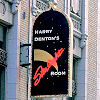
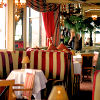
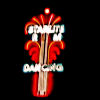
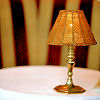
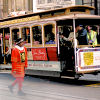
Cable Car Deluxe
– inspired by Tony Abou-Ganim‘s modern classic
1-1/2 oz gold rum (such as Appleton V/X)
scant 1/4 tsp allspice dram
3/4 oz Grand Marnier
1 oz lemon juice
1/2 oz simple syrup (highly optional)
Shake with ice, and strain into a chilled, cinnamon-sugar-rimmed cocktail glass. Garnish with an orange or lemon spiral.
———————-
Other featured cocktails with a San Francisco twist:
-
Bee’s Knees – Our version, made with 100% local ingredients
-
The Soiree – SF Cocktail Week’s signature drink for 2008
-
Martinez – Jerry Thomas invented it here in San Francisco
Drink of the Week from our local bars:
bar culture, Bay Area, downtown SF, Drink of the Week, drinks, locavore, Mixology Monday, recipes
8 Comments »




Posted by Anita on 07.31.08 11:02 AM
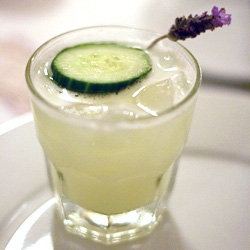 We’d planned take a break from Drink of the Week while we’re vacationing down in Southern California with family. (After all, it’s not like we haven’t had plenty to drink lately). But since we already had this recipe planned for our next DOTW installment when Deb at Everyday Food invited us to participate in today’s Cuke & Zuke Fest, how could we resist jumping online to share it with you?
We’d planned take a break from Drink of the Week while we’re vacationing down in Southern California with family. (After all, it’s not like we haven’t had plenty to drink lately). But since we already had this recipe planned for our next DOTW installment when Deb at Everyday Food invited us to participate in today’s Cuke & Zuke Fest, how could we resist jumping online to share it with you?
We had our share of interesting Charlotte Voisey cocktails during the Spirited Dinner at Restaurant August, but her Cucumber and Lavender Sour was our table’s favorite drink by far. It requires a little up-front planning (or shopping), but beyond that it’s simply a straight-up gin sour with a few extra dashes of flavor.
Along with the usual gin botanicals like juniper and coriander, Hendrick’s uses cucumber and rose petals as aromatics in their distillation process, so it’s not surprising that adding cucumbers and floral notes in this drink makes for a delicious end result.
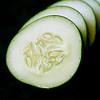
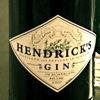

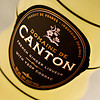

Cucumber and Lavender Sour
– Charlotte Voisey
1-1/2 oz Hendrick’s gin
1/4 oz Domaine de Canton ginger liqueur
3/4 oz lavender syrup (see below)
1/2 oz lemon juice
1/2 egg white
2 slices English cucumber (plus 1 for garnish)
2 dashes lavender bitters*
fresh lavender, for garnish
In a mixing glass, muddle 2 cucumber slices with lavender syrup. Add the remaining ingredients, and shake well with ice. Strain into an ice-filled rocks glass, and garnish with a cucumber slice and sprig of lavender.
Lavender syrup
1/2 cup water
1/2 cup granulated sugar
2T dried lavender flowers
Heat sugar and water together until just dissolved. Remove pan from heat and add lavender. Let sit until cool. Strain out the lavender and filter, if desired. (Alternately, Sonoma Syrup and Monin make commercial versions; the latter has a purple tint.)
* Charlotte uses lavender bitters created by a London friend. If you don’t feel up to concocting your own, Fee Brothers’ grapefruit bitters are a complementary alternative.
Drink of the Week, drinks, other blogs, Tales of the Cocktail
13 Comments »




Posted by Anita on 07.18.08 6:36 AM
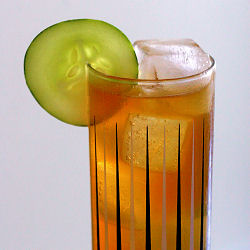 Few of our friends can believe that two people as obsessed with food and drink as we are have never been to New Orleans before. But it’s true: This week is our inaugural — although I think it’s safe to say definitely not our last — adventure in the City that Care Forgot.
Few of our friends can believe that two people as obsessed with food and drink as we are have never been to New Orleans before. But it’s true: This week is our inaugural — although I think it’s safe to say definitely not our last — adventure in the City that Care Forgot.
When Cameron mentioned at poker night last week that we were heading to New Orleans, our friend Dave’s eyes lit up. If there’s a San Franciscan who loves NOLA more than Dave, I sure don’t know him. He and his crew of roving debauchés have made their way to the Crescent City at least once a year for the past 11 years.
He sent us a 1,000-word-plus email, jammed with his favorite places and treats, devoting an entire paragraph (after 10 others on more-obscure offerings) just to the touristy French Quarter food & drink experiences that are actually worth the trouble:
“Get a cafe au lait and beignets at Cafe du Monde! Eat a muffaletta from Central Grocery on Decatur Street! Shoot oysters at Acme Oyster House! Get late-night eats and abuse from flaming waiters at Clover Grill! And drink a Pimm’s cup at Napoleon House bar!”
So, never one to pass up good advice, we hopped over to Napoleon House for lunch yesterday. We sat ourselves down amid glorious decrepitude and a century’s worth of graffiti, and ordered up a round of Pimm’s, a half a muffaletta, and a roast-beef po’boy. Ancient ceiling fans rotated overhead as bow-tied waiters shuttled between table, bar, and patio. Mid-meal, our Seattle cadre wandered in from the sidewalk swelter, followed closely by a friend from the other side of the continent. No fools, these drinkers: It was Pimm’s for everyone; tall, cool, and fast.
The Pimm’s Cup is our entry for this month’s Mixology Monday — aptly honoring the fine city of New Orleans, and even more aptly hosted by MxMo’s founder, Paul of Cocktail Chronicles. Now, frankly, I’m not sure how this quintessential English picnic drink became such a New Orleans standard. But if there were a Jeopardy! category called “Drinks of the Big Easy”, it’d be right there in the middle of the board, below the Hurricane, the Ramos Fizz, and the Sazerac, but above the Vieux Carre, the Obituary, and the La Louisiane. No matter the reason for its iconic status, it’s certainly a long, cool refresher that makes a potent antidote to the sticky New Orleans weather, and it’s known as a respectable option for daytime drinking… a pastime in which the Crescent City excels.


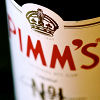
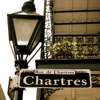
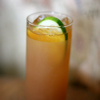
Pimm’s Cup
– Napoleon House, New Orleans
Food & Wine Cocktails 2008
1-1/2 oz Pimm’s No. 1
2-1/2 oz fresh lemon juice
1 oz simple syrup
1-1/2 oz chilled lemon soda (preferably French-style ‘lemonade’, but 7up will do)
cucumber wheel, for garnish
 Add the Pimm’s, lemon juice, and simple syrup to a cocktail shaker. Add ice and shake well, straining into an ice-filled colling glass. Stir in the soda, and garnish with the cucumber wheel.
Add the Pimm’s, lemon juice, and simple syrup to a cocktail shaker. Add ice and shake well, straining into an ice-filled colling glass. Stir in the soda, and garnish with the cucumber wheel.
bar culture, Drink of the Week, Mixology Monday, New Orleans, recipes, Tales of the Cocktail
19 Comments »




 I feel downright terrible that it’s taken me this long to tell you about the fabulous time we had last month in Seattle at Le Mixeur, the exclusive soirée organized by the Munat Bros, Ted & Charles. But in my defense, it’s taken me this long to figure out how to explain it without sounding like I’m bragging. Because, dear reader, saying Le Mixeur is a cocktail party is like calling the Titanic a boat: Technically accurate, but completely missing the point both in scale and impact.
I feel downright terrible that it’s taken me this long to tell you about the fabulous time we had last month in Seattle at Le Mixeur, the exclusive soirée organized by the Munat Bros, Ted & Charles. But in my defense, it’s taken me this long to figure out how to explain it without sounding like I’m bragging. Because, dear reader, saying Le Mixeur is a cocktail party is like calling the Titanic a boat: Technically accurate, but completely missing the point both in scale and impact.

























































